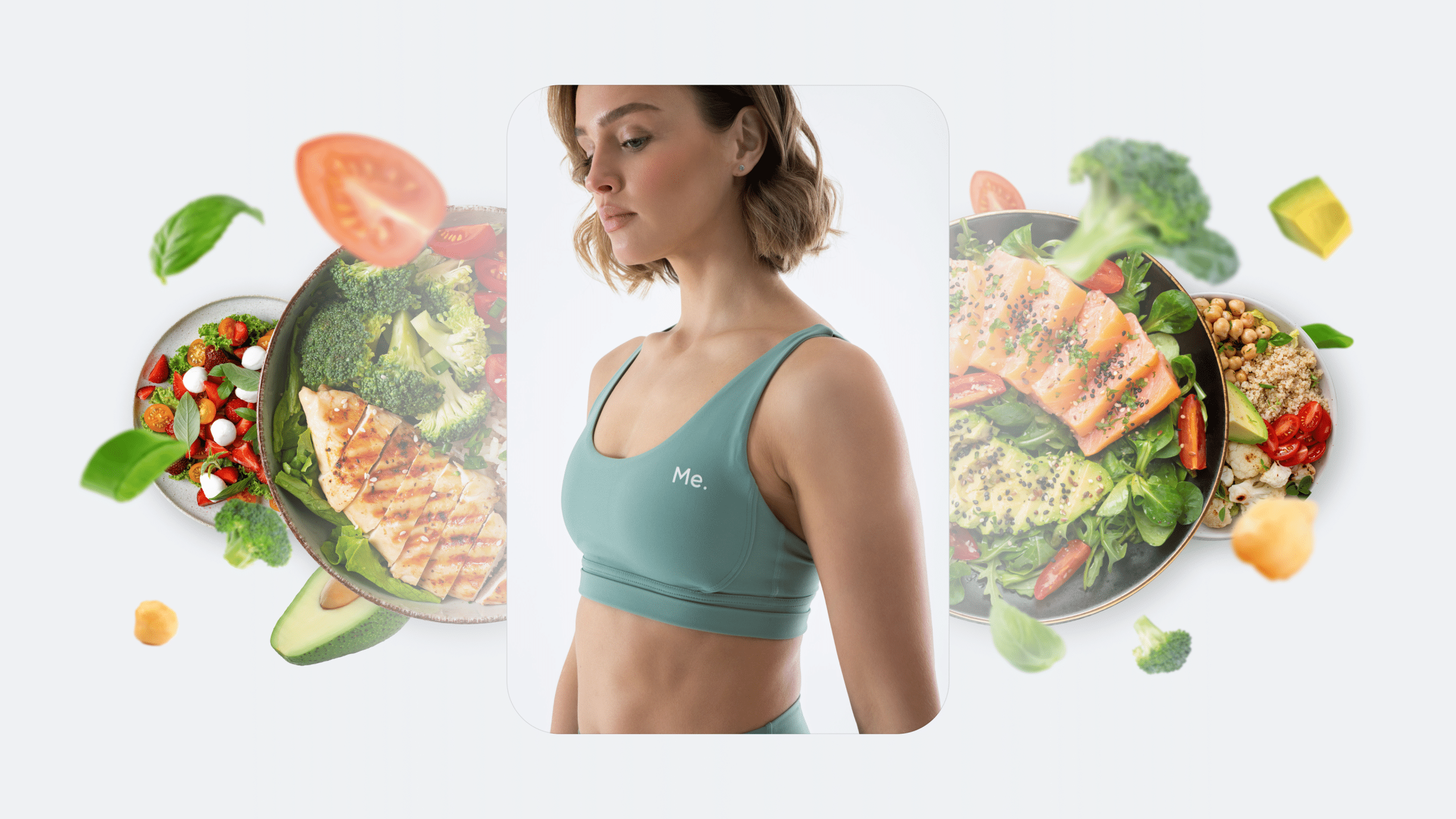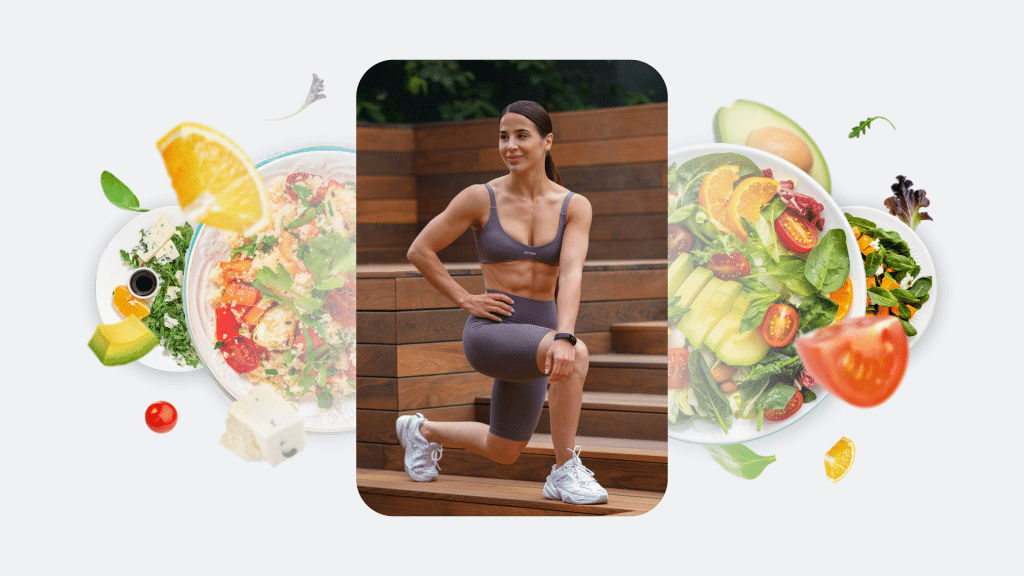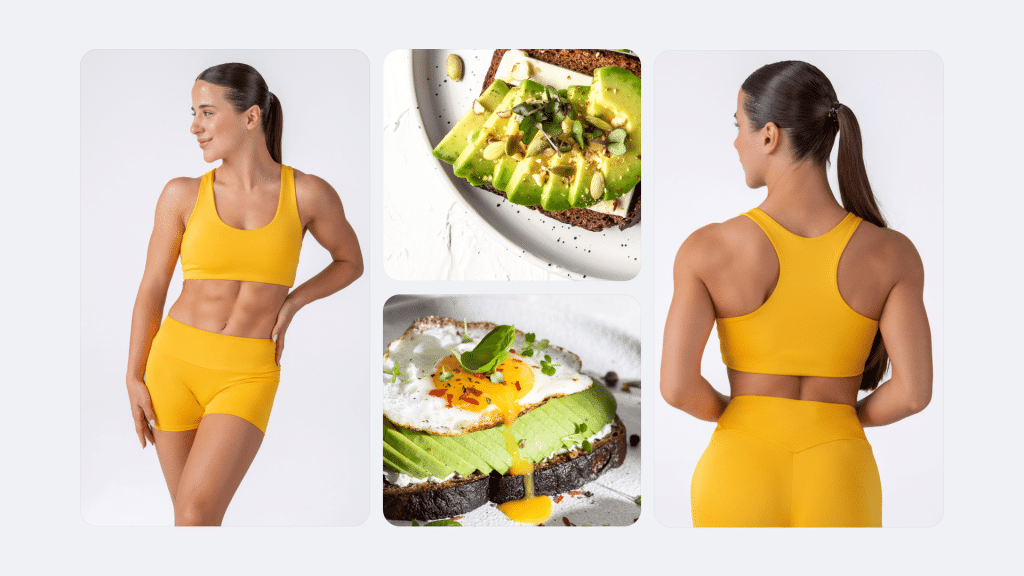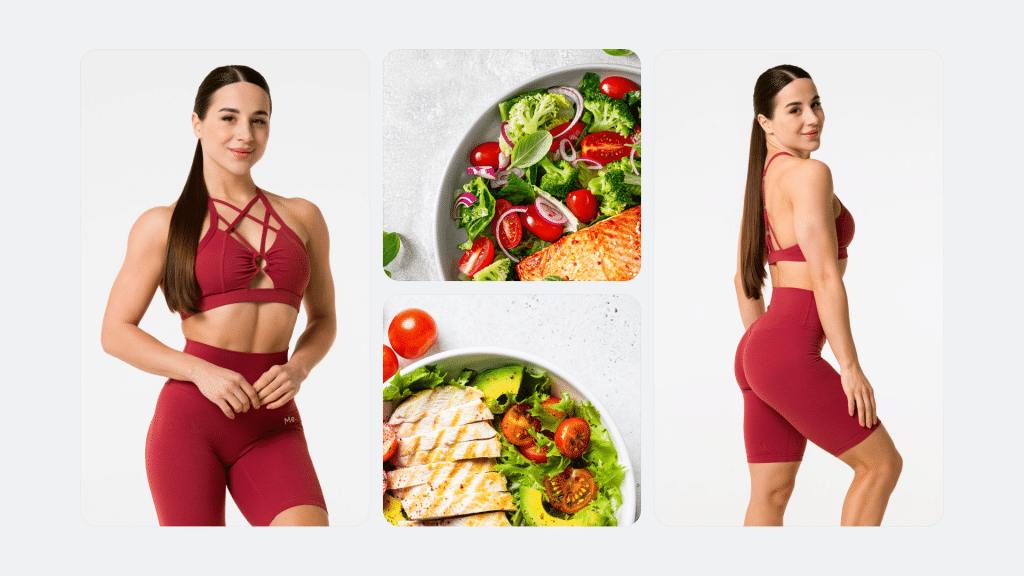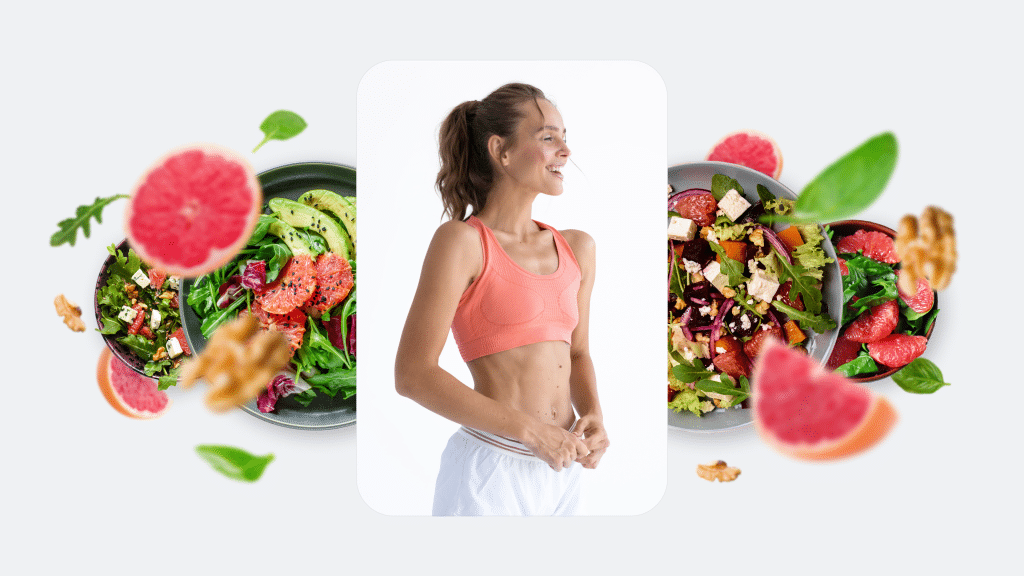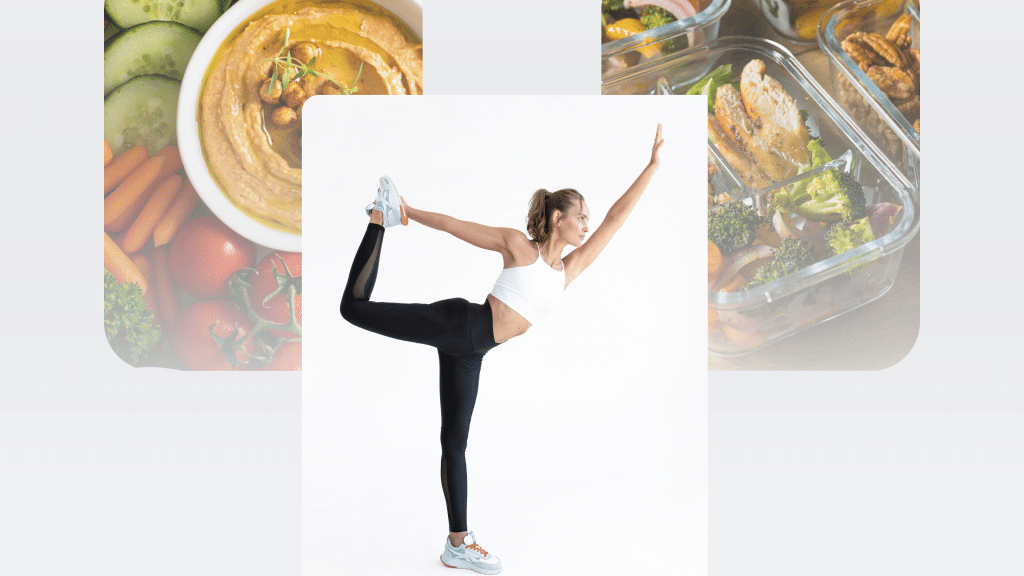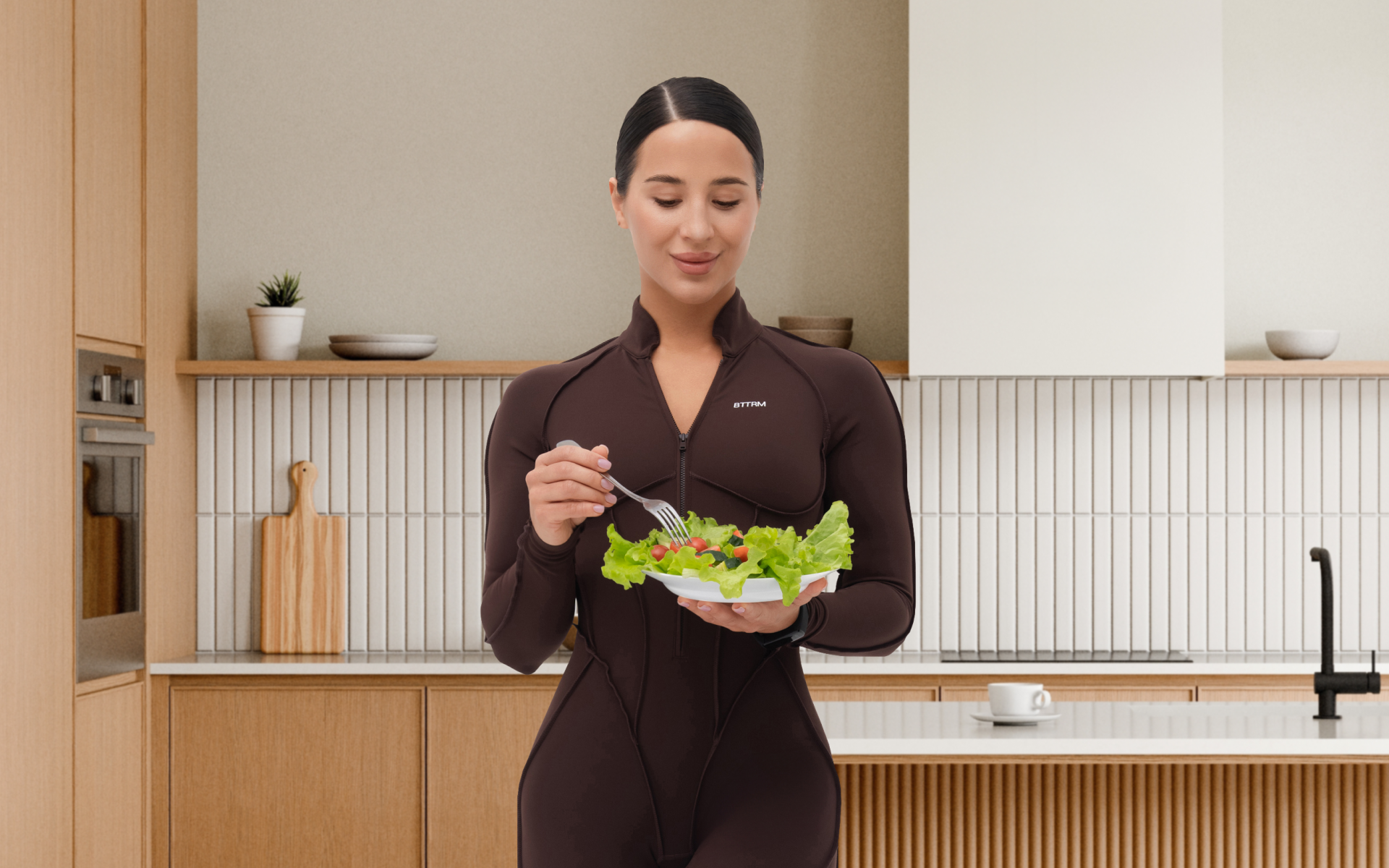To understand how much food 3,000 calories is, it’s important to understand how many calories your body needs. The average man needs approximately 2,500 calories per day and the average woman needs about 2,000 calories (23). Of course, your needs may vary from the average based on individual factors.
Staying at the same weight means your body burns about the same number of calories as you consume. When there’s a significant difference in the number of calories your body burns versus what you consume, your body changes depending on whether there’s a surplus or deficit.
Excess or surplus calories that aren’t burned for energy are stored in the form of fats and this results in weight gain. Therefore, regularly eating more calories than your body needs to burn for energy will make you gain weight over time.
Of course, the reverse also holds. Eating fewer calories than your body burns for energy can result in weight loss. This is because the body resorts to burning stored fat for energy to make up the difference.
It’s important to understand that different foods have different numbers of calories – some higher and some lower. For calorie-dense foods, this means you can eat smaller portions and achieve 3,000 calories easier than with low-calorie foods. For the latter, you may need to eat bigger portions to achieve the same number of calories.
But how much food is 3,000 calories? We’ll explain this with respect to different types of foods and calories to understand this better.
How Much Food Is 3,000 Calories a Day?
How much food 3,000 calories a day is depends on the choice of food you eat. If your aim is to consume this number of calories daily, you must consider nutrient-dense foods that are healthy and high in calories.
Consuming mostly foods that are low in calories may make it difficult to achieve the 3,000-calorie mark as this would involve eating large portions.
When you think of 3,000 calories, you may think of a mountain of food that’s impossible to finish but that isn’t the case. Some foods in their small portions carry a higher number of calories than others. For example, some pizzas contain even more than 3,000 calories as we’ll mention later. Therefore, if you can eat all of a large pizza, then you will have eaten that many calories.
It’s important to note that the choice of food determines the portion sizes. Just to make it clear and give you a real picture of what this number of calories looks like, let’s check out this simple 3,000-calorie meal plan:
Breakfast (about 800 calories)
During your breakfast meals, you need to aim for around 800 calories. Some of the food choices for your breakfast to make that number of calories include:
- 2 slices of whole-grain bread – 162 calories (19).
- 3 large eggs, scrambled – 273 calories (9).
- 1 medium banana – 105 calories (4).
- 1 cup of orange juice – 112 calories (13).
- 1 cup of cooked oatmeal – 159 calories (10).
Total calories for breakfast: 811 calories.
Lunch (about 800 calories)
For lunch, you also need to aim for about 800 calories from the different food choices. An example of a common lunch combination of foods that creates a balanced diet is:
- Spaghetti – 158 calories (15)
- Ground beef – 332 calories (5)
- Tomato sauce – 29 calories (22)
- 1 teaspoon of butter – 102 calories (7).
- 1 cup of breadsticks – 190 calories (6)
Total calories for lunch: 811 calories.
Whether you’re a workout beast or just a beginner making your first foray into the world of fitness and dieting – BetterMe has a lot to offer to both newbies and experts! Install the app and experience the versatility first-hand!
Dinner (about 800 calories)
For dinner, we’re also aiming for about 800 calories. It’s also important to keep it balanced as in the following menu:
- 1 cup of brown rice – 248 calories (17)
- Asparagus – 27 calories (3).
- Salmon – 208 calories (11)
- Grilled steak – 252 calories (12)
- Side salad – 85 calories (18).
Total calories for dinner: 820 calories.
Snacks (about 600 Calories)
For snacks, you may choose to eat two snacks in between the meals or three smaller snacks. Of course, you’re aiming for about 600 calories in total.
Morning Snack
For a morning snack, you can aim for about 300 calories. Some food choice options for this include:
Total calories for morning snack: 318 calories.
Read more: Bulking Snacks: Everything You Need to Know Before You Start
Afternoon Snack
For this snack, we’re also aiming to hit about 300 calories. Some of the food choice options for this snack include:
Total calories for an afternoon snack: 263 calories.
With this diet plan, you’ll consume approximately 3,000 calories and you’ve got a picture of what 3,000 calories looks like. Of course, when using more high-calorie foods, the portions may look smaller than with more low-calorie foods.
Is 3,000 Calories Hard to Eat?
It’s not difficult to eat 3,000 calories daily, but it can be challenging. It’s probably not something you can do without a plan. To achieve this number of calories daily, you need to have a diet plan to ensure you’re eating healthy.
It’s also important to understand that the calories you need to eat are dependent on many factors. If you’re living a sedentary lifestyle, then 3,000 calories daily is probably too much. However, if your goal is to gain weight or even engage in a lot of physical activities that require a lot of energy, you may find it easy and natural to eat 3,000 calories daily.
So, whether this number of calories is difficult to eat or not is dependent on personal goals or needs. It can be hard for someone who is trying to lose weight or isn’t particularly active, but for someone who wants to gain weight or be physically active, it’s quite normal and possible to achieve this without a struggle.
Another thing is the diet plan. If the plan includes calorie-dense and nutrient-dense foods, then it would be easier to live on that diet plan.
Is It Possible to Eat 3,000 Calories in One Meal?
Yes, it’s possible to eat 3,000 calories in one meal. A single large Pizza Hut 14″ Super Supreme Pizza contains 3,260 calories (16), and if you can eat that alone, you may not feel comfortable. Of course, you can also eat this number of calories in a single meal by combining calorie-dense foods into one meal.
One thing you will note is that while it’s possible to eat such a high number of calories in one meal, it can make you uncomfortably full. The body can also cope with one-time calorie indulgence, but prolonged overeating may come with other risks (20).
What Happens If You Eat 3,000 Calories a Day for a Month?
The more likely result is weight gain. Eating 3,000 calories daily provides a calorie surplus for the majority of people. The excess calories that aren’t burned are stored in the form of fat and this leads to weight gain. This is assuming that your body burns less than 3,000 calories daily for the energy it needs for its processes.
If you engage in physical activity that requires the same amount of energy, you might just maintain your weight as there are no surplus calories.
In addition to gaining weight, some of the other effects of eating 3,000 calories daily can include:
Muscle Gain
Eating more calories is important for muscle growth. However, it’s not the sole factor. The surplus calories will help with muscle repair and growth, but you’ll also need a significant proportion of the calories to come from protein sources. This is because proteins play an important role in the building of muscle blocks. In addition, you can’t build muscles on calories alone and need to combine them with regular exercise such as weightlifting or resistance training.
Nutrient Variety
With a 3,000-calorie meal plan, your body should get a variety of nutrients that it needs to function properly. When following this diet plan, the key is to focus on nutrient-dense and high-calorie foods so your body benefits a lot from the balance of nutrients.
It’s also important to note that the different nutrients play different crucial roles in the body. For example, proteins help in the repair and building of the body tissues while carbohydrates provide energy.
Boost in Energy
Eating more calories will have a direct impact on energy. Calories are the energy units and this means that consuming more of them will give you more energy to perform your daily activities while maintaining body functions and processes.
Of course, there are also negative effects that come with this diet plan. In some cases, eating 3,000 calories daily may also have negative impacts that include:
Excessive Weight Gain
This is the obvious outcome when you consume a lot of calories and have more surplus left for storage. For example, if you’re always on a surplus of over 500 calories, that adds up daily, and if it’s not managed, it may lead to excessive weight gain.
BetterMe: Health Coaching app helps you achieve your body goals with ease and efficiency by helping to choose proper meal plans and effective workouts. Start using our app and you will see good results in a short time.
Blood Sugar Fluctuations
If you eat a lot of added sugars and refined carbohydrates in order to meet a high calorie goal, this may have a direct impact on blood sugar and may cause fluctuations. This is more likely to be a problem if you have diabetes, prediabetes, or some other medical condition that affects your blood sugar control. To better manage this, it’s important to ensure your calories come from a balanced diet including proteins, healthy fats, and complex carbohydrates, among others.
Nutrient Imbalance
If your diet doesn’t contain enough essential nutrients or lacks variety, this may create a nutrient imbalance, which may not be a healthy practice. A diet with vitamin or mineral deficiencies may be disadvantageous as it may impair overall body function.
Digestive Issues
If the diet is imbalanced or contains too many ultra-processed foods, it may result in digestive issues such as constipation that comes with a low-fiber diet, bloating and gas, acid reflux, and even diarrhea.
Read more: Lazy Dinner Ideas When You Don’t Feel Like Doing Anything
How Much Will I Weigh If I Eat 3,000 Calories?
If you eat 3,000 calories, you’re more likely to gain weight if you have the energy needs of an average person. This is only possible if your body burns less than that for energy. Therefore, if your body burns 2,500 calories daily, then you have a surplus of 500 calories that your body can store as fat.
An increase of 500 to 1,000 calories daily may cause a weight gain of approximately 1 to 2 pounds per week (13). Therefore, if there is a surplus of 500 calories daily, then you may gain about 1 pound of weight in a week.
Of course, it’s not guaranteed that you will gain weight by eating 3,000 calories daily. Other factors may make it difficult, including:
Activity Level
If you’re engaged in activities that require or use a lot of energy, you may find 3,000 calories to be just enough to supply the energy you need to maintain your weight. This means you may not gain weight as there is no surplus calories.
Age
Energy needs are influenced by age and tend to decline slightly as we get older. For example, younger to middle-aged adults tend to need more calories than older adults.
Sex
It’s also evident that men need more calories than women, even if their activity levels are similar (10). Therefore, most women are more likely to have a calorie surplus and to gain weight than men who are consuming the same number of calories.
Basal Metabolic Rate (BMR)
This refers to the number of calories your body burns while you’re at rest. If your body burns more calories while at rest, this may make it difficult to have a surplus, which would lead to weight gain. Your BMR is influenced by factors such as age, sex, and body size.
The number of calories in 1 lb depends on the type of food. This is because different foods have different numbers of calories. The number of calories in 1 lb of body fat is estimated to be around 3,500. The portions of 3,000 calories can look different depending on the choice of foods. To put this into perspective, a single large Pizza Hut 14″ Super Supreme Pizza contains 3,260 calories (16), which would see you exceed 3,000 calories in just one meal. For foods that are low in calories, you may need many large portion sizes to achieve 3,000 calories. On the other hand, smaller portions of high-calorie foods can easily make up the same number of calories. The number of calories you can burn when you do 10,000 steps depends on your weight, fitness level, and how quickly you walk, among other factors. For example, a person who weighs 120 pounds may burn approximately 250-300 calories while a person who weighs 185 pounds may burn approximately 400-450 calories (21). Yes, 3k calories can be good for bulking. This would be a good target if your body burns less than 3,000 calories for energy. For example, if your body needs 2,500 calories daily, the surplus should be enough to help you bulk. However, if you’re engaged in a lot of physical activities that burn more than 3,000 calories, you may need to add more to bulk.Frequently Asked Questions
How many calories are in 1 lb?
What does 3,000 calories look like?
How many calories does 10,000 steps burn?
Is 3k calories good for bulking?
The Bottom Line
At this point, you should understand how much food 3,000 calories is. As previously mentioned, it’s dependent on the choice of food. For example, if your choice comprises calorie-dense foods or those that are high in calories, small to moderate portions can easily add up to 3k calories. With low-calorie foods, you’ll need large portions to make up the same number of calories and it may even become difficult to consume so much in a single day.
Therefore, if you want to consume 3,000 calories daily, you need to select the right choice of foods that are calorie-dense, rich in nutrients, and balanced.
DISCLAIMER:
This article is intended for general informational purposes only and does not serve to address individual circumstances. It is not a substitute for professional advice or help and should not be relied on for making any kind of decision-making. Any action taken as a direct or indirect result of the information in this article is entirely at your own risk and is your sole responsibility.
BetterMe, its content staff, and its medical advisors accept no responsibility for inaccuracies, errors, misstatements, inconsistencies, or omissions and specifically disclaim any liability, loss or risk, personal, professional or otherwise, which may be incurred as a consequence, directly or indirectly, of the use and/or application of any content.
You should always seek the advice of your physician or other qualified health provider with any questions you may have regarding a medical condition or your specific situation. Never disregard professional medical advice or delay seeking it because of BetterMe content. If you suspect or think you may have a medical emergency, call your doctor.
SOURCES:
- 100 G Blueberries (n.d., nutritionix.com).
- Apples, raw, with skin (Includes foods for USDA’s Food Distribution Program) (2019, fdc.nal.usda.gov).
- Asparagus, raw (2019, fdc.nal.usda.gov).
- Bananas, Raw (2019, fdc.nal.usda.gov).
- Beef, ground, 70% lean meat / 30% fat, raw (2019, fdc.nal.usda.gov).
- Bread, sticks, plain (2019, fdc.nal.usda.gov).
- Butter, without salt (2019, fdc.nal.usda.gov).
- Cheese, cottage, creamed, large or small curd (2019, fdc.nal.usda.gov).
- Egg, whole, cooked, scrambled (2019, fdc.nal.usda.gov).
- Estimated Number of Calories Needed Based on Age*, Sex, and Activity Level (n.d., msdmanuals.com).
- Fish, salmon, Atlantic, farmed, raw (2019, fdc.nal.usda.gov).
- Grilled or Baked Beef Steak (n.d., fatsecret.co.za).
- Increasing Calories (n.d., gicare.com).
- Nuts, almonds (2019, fdc.nal.usda.gov).
- Pasta, cooked, unenriched, without added salt (2019, fdc.nal.usda.gov).
- PIZZA HUT 14″ Super Supreme Pizza, Hand-Tossed Crust (2019, fdc.nal.usda.gov).
- Rice, brown, long-grain, cooked (Includes foods for USDA’s Food Distribution Program) (2019, fdc.nal.usda.gov).
- Side Salad (n.d., nutritionix.com).
- Slice Whole Grain Bread (n.d., nutritionix.com).
- Small Study Suggests Body Copes Well With One-Time Calorie Indulgence (n.d., todaysdietitian.com).
- Step counting | The fact and fiction of walking 10,000 steps a day (n.d., nuffieldhealth.com).
- Tomato sauce, canned, no salt added (2019, fdc.nal.usda.gov).
- Understanding calories (n.d., nhs.uk).
